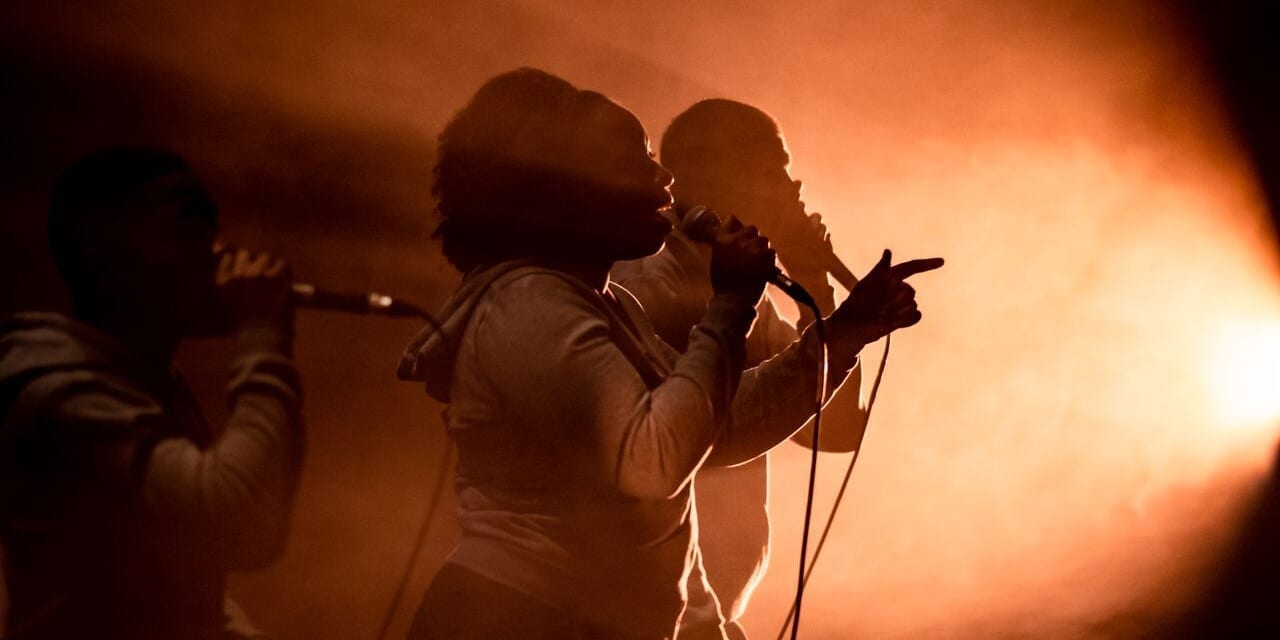This show deserves a six-star rating. It wins on so many levels I don’t know where to start. The show grew out of a youth project that began 10 years ago at BAC where young people were invited to come along and learn the skills of beatboxing. This is a music form related to rap and hip-hop where performers produce rhythmic sounds by using their voices to mimic percussion instruments. But beatbox is just a starting point for the creative talents here. In this show, to a beatbox background, the six people on stage sing, chant, pose, and dance, conjuring up images and ideas which have emerged from their collective thinking about Frankenstein and the idea of what a modern monster might be made of. It is by turns funny, scary, and moving. It is a work of collective genius!
The show begins with the stage lit dimly through a fog of dry ice and the performers seated on their six speakers clutching their microphones. The only other part of the set is a mass of dim hanging lights that dangle above them. First, they riff about the parts of the body that would be needed to create a monster, and later they move on to make links between the physical world of body parts and the social world in which appearance and human connections are so important. “Hashtag Hideous” is a highlight of the show as the performers make links between the monster and the monstrous way in which pressure to live up to unrealistic expectations about appearance stifle individuality.
They take turns to front the performance while the others provide soundscapes to back them. Two of the performers have stunning singing voices and for some numbers, we get close to a Tamla Motown sound but, just as soon as you think you know where you are, the performance shifts off in an unexpected direction. We have angry performance poetry suddenly followed by physical comedy – or noisy tunes followed by reflective chanting.
It is not always easy to hear the words and the noise is sometimes deafening but the energy of the performers and the sheer joyfulness of the way they work together carries the whole audience along. As someone who is more at home with opera than with rap, I not only enjoyed the evening enormously but it also made me think about the struggles opera composers have with recitative – the setting of spoken words to music that reflects speech patterns. I would love to think that today’s composers are learning from fellow artists like the group here. They would learn a lot – and have a great time.

